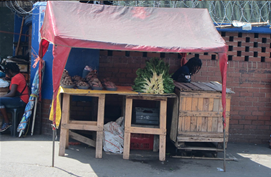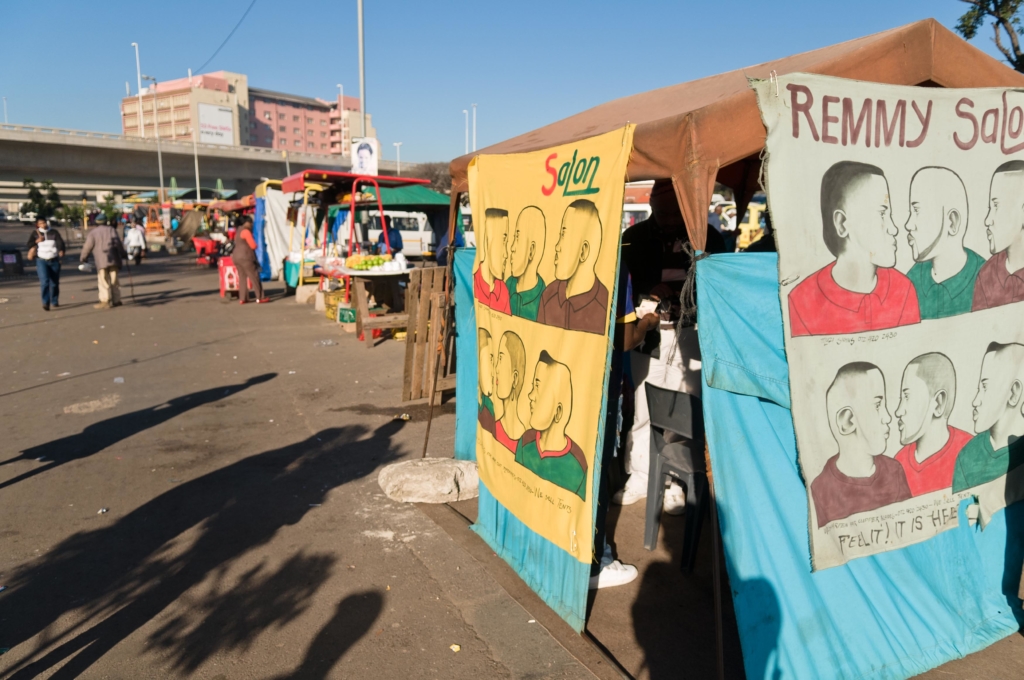Sarah Heneck
From an outsider’s perspective, this may seem unrelated to AeTs mandate, which is focused on supporting informal workers livelihoods. However, when one engages more deeply with the informal worker community of Warwick Junction it becomes clear that this community is made up not only of street vendors, market traders, informal recyclers and their informally employed assistants, but also many of their children. These children spend their days on the streets and in the markets of Warwick Junction, while their primary caregivers – usually their mothers – work. AeT, for the past 3 years has been part of an international collaborative conducting research in order to understand the reasons why children are being brought up in informal work environments and the challenges that these mothers and their children face, in order to develop urban design interventions which aim to improve the situation on the ground.
AeTs introduction to the childcare realm arose through a connection with the World Health Organisation (WHO). WHO, AeT and a number of other local and international partners created a collaboration called uLiNCs – Urban Livelihoods and Nurturing Care projects. The overall aim of uLiNCs is to support women working in the informal economy to sustain their livelihoods, protect their health and nurture their children. There are a number of ways in which the collaborative hopes to achieve this. AeT has focused the majority of its efforts on the goals of creating safer spaces and enabling mothers to be close to their children.
A round of research, in the form of interviews and focus group discussions with informally working mothers, as well as broad environmental assessments, was conducted in 2017 and another was conducted in 2019. What has arisen from the research is that informally working mothers are unable to take maternity leave after giving birth without sacrificing their income or their trading space – this means that they are likely to return to work earlier than they should. Some of these mothers return to work and leave their children in the care of a family member or at a childcare facility. This means that they are likely to stop breastfeeding early, which has negative implications for their child’s health and development. Other mothers bring their children with them when they return to work. They do this because they cannot afford to send them to a childcare facility and/or because they do not think the level of care at the childcare facilities is of a good standard so they would rather have their children with them. When their children are still very small they put them to sleep in re-purposed boxes or crates underneath their trading stalls, and when they become mobile they allow them to play with other children in the vicinity of their trading space, keeping as close an eye on them as they can. However, what also came through strongly in the research was that mothers have a lot of major concerns with regard to bringing their children to work; they worry about their safety, they worry about them getting sick from exposure to dust and bad weather, they worry about them picking up bad habits from strangers in the markets and they worry that they are being brought up in an environment which is not conducive to their optimal development. Furthermore, having their children with them can result in the mothers’ losing customers, and therefore compromising their livelihoods.
Through learnings from the research, combined with over 10 years of learning through working with informal workers in the Warwick Junction area, AeT has come up with an urban design response to deal with some of the concerns of informally working mothers. The response has taken the form of a ‘pop-up micro childcare facility’ designed for informal work spaces so that children can be in close proximity to their mothers while their mothers are at work and the mothers have the option of an affordable childcare facility which is safer for their children and offers them an environment which will enhance their development. The facility is a ‘pop-up’ because the tent structure and storage boxes allow for it to be assembled every morning and disassembled every afternoon with relative ease, mimicking the infrastructure already used on the street. It is ‘micro-scale’ because it is designed to accommodate 6 children (6 months to 3 years old).

Typical trading stall in Warwick Junction. Photo: Tasmi Quazi. 
Barbers’ tent setup in Warwick Junction. Photo: Andrew Griffin by permission AeT. 
Overnight storage in Brook Street. Photo: Richard Dobson.
It is made affordable through the ‘peer-to-peer/time-bank’ model of operation; the intention is for each of the mothers who have a child attending the childcare facility to be responsible for the care of all 6 children for the equivalent to 1 day a week. Although it does adhere to the City’s by-laws regarding childcare facilities, this facility is not intended to replace more formal childcare facilities, but it is a more immediate, and therefore a more appropriate response, to the very real issue of children being brought up on the streets. Two versions of this childcare facility will be piloted in 2020 in two underutilized spaces in the Warwick Junction markets. Blogs to follow will elaborate further on the research findings, the design process, and the pilot facility and outcomes.
[Feature image: Street vendors and market traders first preview and demonstration of the micro childcare facility prototype]

